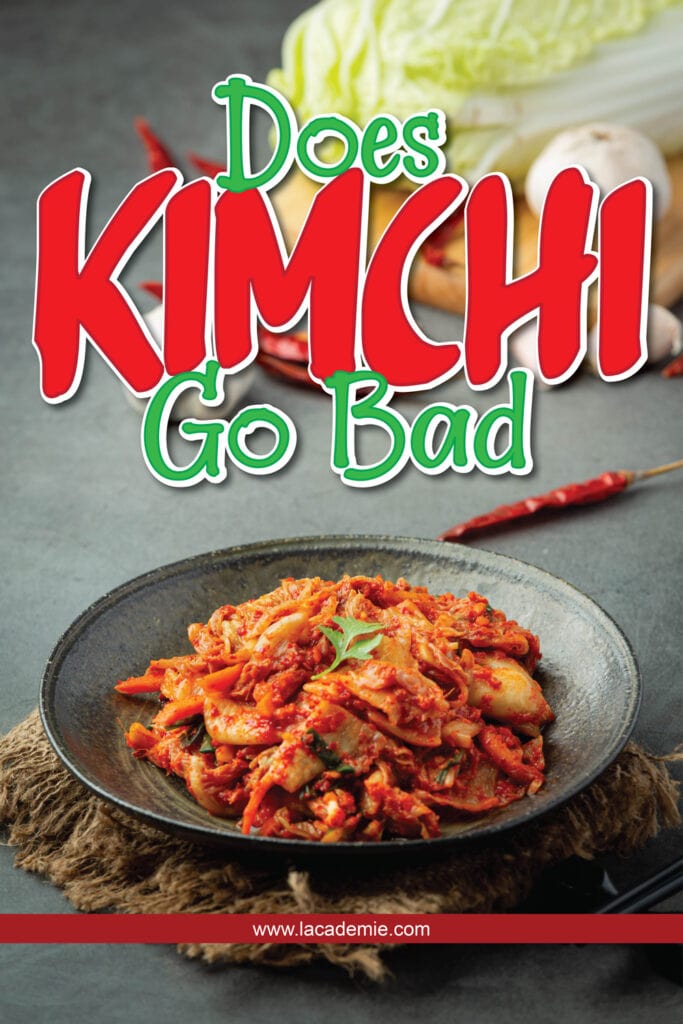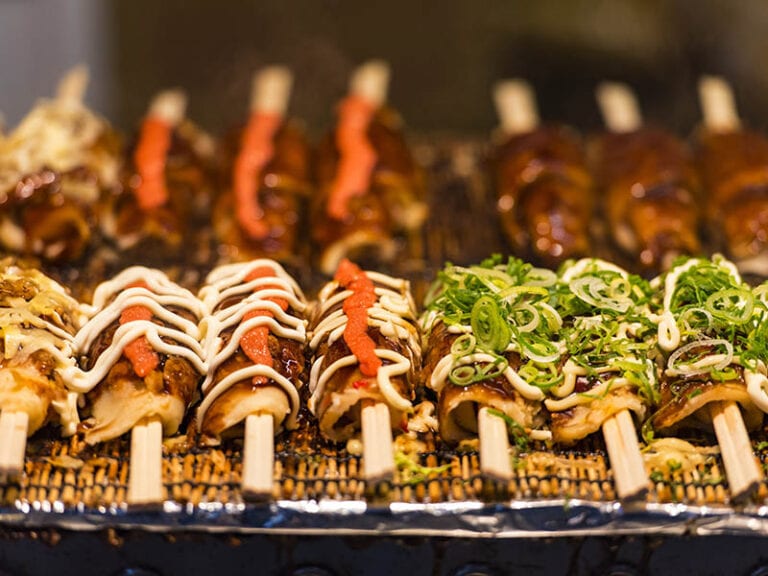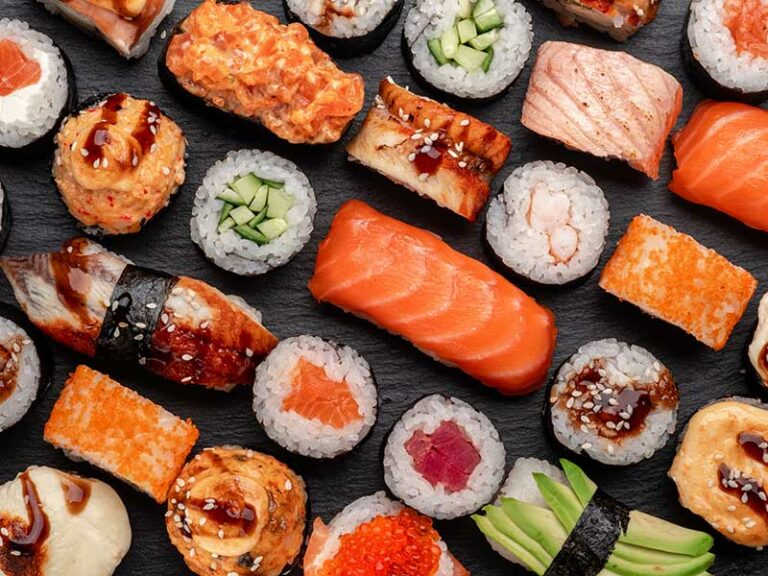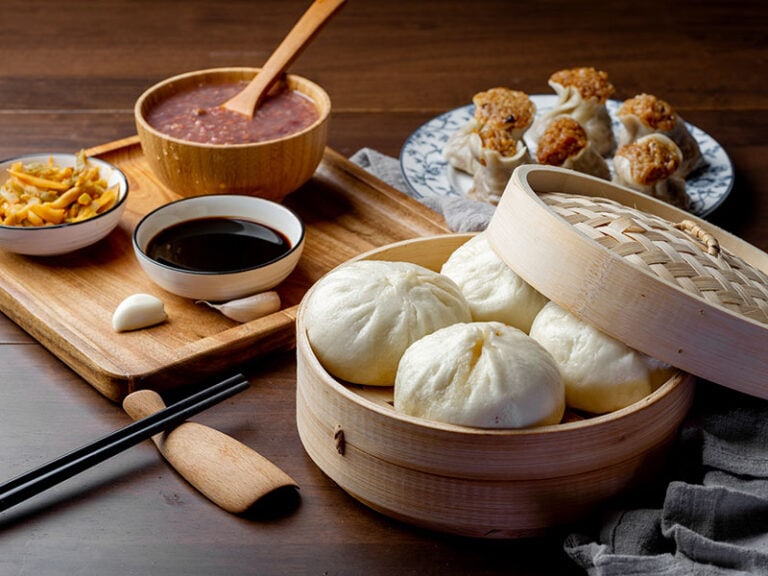There have been many debates on the topic “does kimchi go bad?”, just like how many cannot come to a consensus if it’s a good idea to freeze sauerkraut. As kimchi and sauerkraut are both fermented veggie, some people think that their shelf-life is indefinite and need no freezing.
Kimchi is a popular Korean dish with spicy fermented cabbage and a few more vegetables. I often buy kimchi at a Korean grocery store and a Korean lady working there told me that kimchi doesn’t go bad if it is taken care of properly.
But then, what does the expiry date labelled on the kimchi jar mean?
You must have had this question in mind since you are stumbling across this article here. Well, you just happened to come to the right place, since I will be answering your question with additional information on how long kimchi can last and how to properly store kimchi.
By doing so, I hope you will be satisfied with the information I provide and enjoy your kimchi to its fullest!

Does Kimchi Really Go Bad?
The good thing about kimchi is it usually takes a long time for it to go bad. However, “bad” here is not about kimchi being spoiled, since it rarely does. We talk about “bad” as there may be mold appearing on kimchi, or the smell and texture would be a bit off.
Spoilage rarely happens for kimchi, but the quality of the kimchi will degrade over a course of time with the possibility of mold appearing on it. So yes, kimchi does go bad and the process of it going bad will differ on how you store your kimchi.
Often though, kimchi that has been stored for a while may start to have signs appearing that we tend to think it has gone bad, where in reality, it is perfectly normal. Below, I’ll explain about signs that kimchi is still able to be consumed, and how to tell when kimchi has really gone bad.
Signs That It Is Still Ok To Eat Kimchi
It is normal for us to get worried about food that we sense is different as they were from the initial state. However, just because there are a few differences doesn’t mean that the food has gone bad. Same goes for kimchi!
Below are the signs we tend to misunderstand that kimchi has gone bad, but in reality we can still definitely consume it:
- Sourness: The fermentation process for kimchi is ongoing no matter if it is stored in the fridge or at room temperature, but faster at room temperature. As the kimchi gets more fermented, the sourness will increase as time passes but this does not mean the kimchi has gone bad.
- Soft and Mushy: When kimchi is stored for a long time, it does get softer and sometimes mushy, too, but that is also not a sign of it going bad. In fact, soft kimchi can still be a phenomenal side dish for potstickers. Try this once and tell me how you think.
- Explodes When Opening: Due to fermentation, sometimes the gas will build up and may cause the liquid to bubble up and overflow.
- Bulging Cap: Same as the small exploding above, the gas may build up and cause a bulging cap.
How To Know When Kimchi Has Gone Bad?
Although kimchi has a long shelf life when properly stored, it does go bad. Bad doesn’t mean that this K-something food is spoiled, but there are signs that will appear which indicate kimchi should not be consumed more due to health reasons. Those signs are as below:
- Mold: Mold does not mean kimchi is spoiled, but it grows on kimchi that is old and indicates that the kimchi should not be used anymore. Mold carries bacteria, so if you ignore the sign and eat it, it may cause food poisoning.
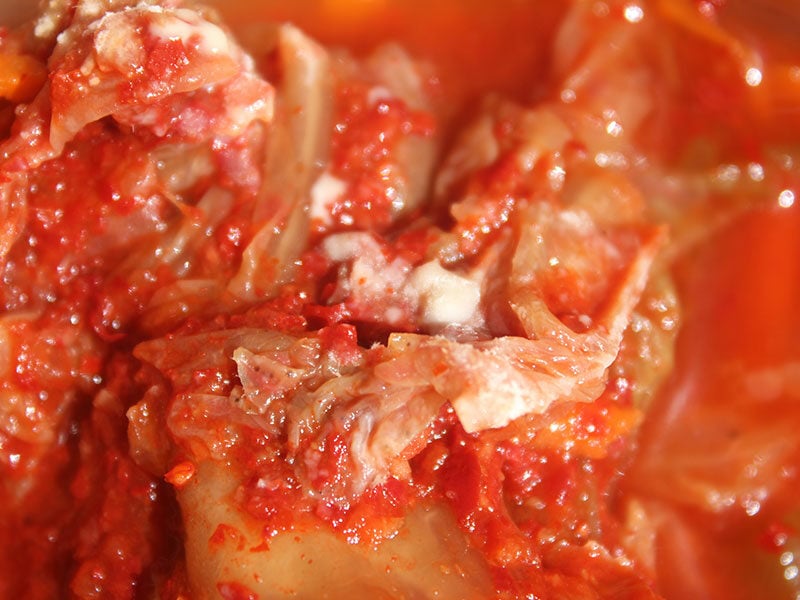
- Smells and Tastes Off: It is hard to describe, but if you do check your kimchi and find a weird smell or taste besides it being more sour, it is an indication that the kimchi is too old and should be discarded for health reasons.
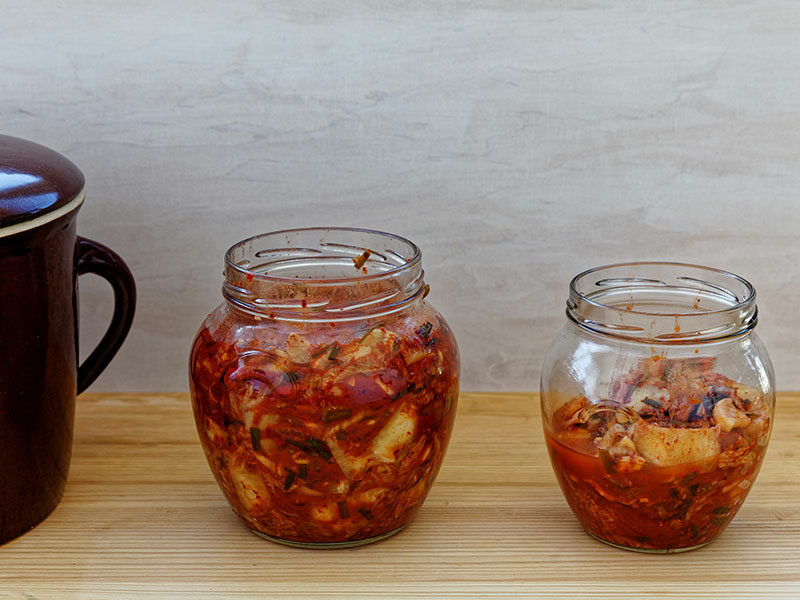
Kimchi’s Shelf Life – How Long Can It Last ?
There is no exact length of which can be defined as kimchi’s shelf life, so manufacturers tend to think about the quality of the taste and print out a “best-by” date on the kimchi jars or packages.
As mentioned, since “best-by”date is just an estimation of when we should eat kimchi to get the best flavor out of it, if properly stored, it may still be fine to consume even after the labelled date.
However, the sourness will increase faster after the “best-by” date if up until a period where even sour kimchi that has been turned into a nice cooked dish even makes you feel uncomfortable due to its sourness, you should discard it. Mold may also grow or start growing as we keep ignoring the length of storing kimchi, which may cause food poisoning and other health problems.
Below is the table that estimates when it is best to consume kimchi, and of course it is just an estimation so if you still want to store your kimchi after that, it is fine. As long as you check carefully if anything is weird in your kimchi before you consume it.
| Types | Room Temperature | Fridge |
| Kimchi (unpasteurized) | – | Post Best-by 1 month |
| Kimchi (Pasteurized, unopened) | Post Best-by 1 – 3 months | Post Best-by 1 – 3 months |
| Kimchi (Pasteurized, opened) | 1 week after opened | Post Best-by 1-3 months |
What Are The Right Ways To Store Kimchi?
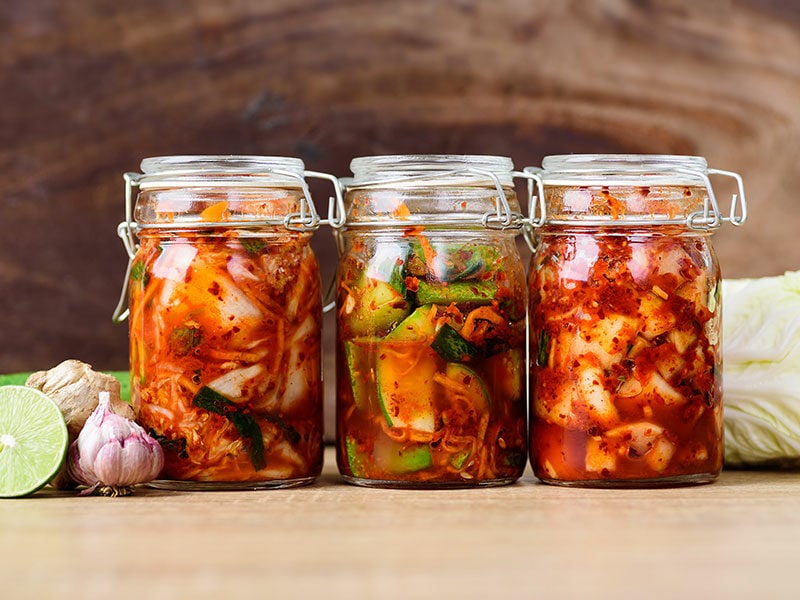
Knowing how to store kimchi in the right ways can help to extend kimchi’s shelf life and keep one’s health better when consuming the food.
Most of the time, kimchi is being sold unpasteurized, which means the fermentation process is ongoing. If you find your kimchi not as sour as you wanted it to be, you can leave the jar at room temperature for 1 day, then put it in the fridge for the fermentation process to slow down.
Fermentation speed starts to get slower in a chiller place, so the fridge is the best place to maintain the initial taste of kimchi for a longer period of time.
These are the main points on how to properly store your kimchi:
- Keep kimchi constantly in the fridge (unless you want it to ferment faster)
- Keep the kimchi ingredients below the liquid
- Seal the jar’s cap or package tightly when not in used
- Use a clean utensil to take the kimchi out of the jar or package
Can You Freeze Kimchi?
Kimchi can be frozen, and in fact kimchi shelf life can increase up to 7 years when being frozen with a condition that it is unopened before you freeze. If you want to freeze kimchi that has already been opened and used, you should only store it in the freezer for 3 months.
Unopened kimchi can either come in a glass bottle or plastic container.
If you want to store unopened kimchi that comes in the glass bottle, make sure you use a clean utensil, such as a clean and well-built kitchen tong. Then, transfer the kimchi inside the bottle to freezer bags or freezer-friendly containers.
A glass bottle may explode in a freezer, and it is dangerous. If you transfer it to a freezer-friendly container, leave 1 – 2 inches of space on the top of the container. Also, make sure you seal the freezer bags or freezer-friendly containers tightly before freezing.
If you want to store unopened kimchi that comes in the plastic container, you can freeze the unopened plastic container directly in the freezer.
For opened kimchi, you can use a clean utensil and scoop into freezer bags or freezer-friendly containers. Leave 1 – 2 inches of space on top for the freezer-friendly containers. Make sure you seal the freezer bags or freezer-friendly containers tightly before you freeze them.
FAQs
These are some additional information I thought would also be useful for you to know a bit more about kimchi shelf life.
Trust Your Senses!
Fermented food like kimchi which does not have an exact shelf life and can sometimes be hard to determine if it’s still good to use or should be discarded. The table shown above is just an estimate of when it is best to consume kimchi, but kimchi can turn bad before or way after the period, depending on how it’s been stored.
That is why using your senses to check if kimchi is still good or not is essential. Check to see if there is mold on it, or any weird smell and taste. If the kimchi is too sour, you can decide if you want to discard it or not, too.
Do you have kimchi at home? How long have you been keeping your kimchi for? As always, feel free to share your thoughts with me under the comment section below!
